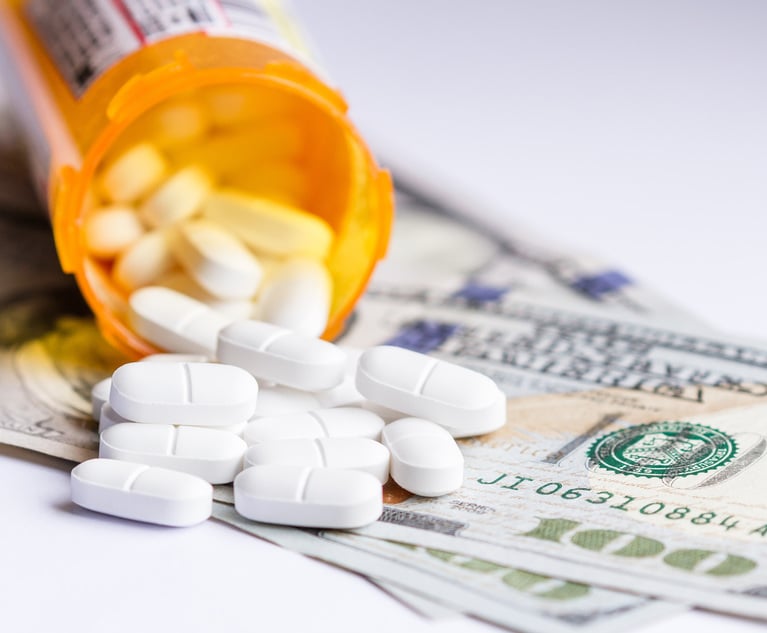Editor's note: Russ Johnston,is president, Casualty Americas, AIG
|There is good news and bad news for employers of nearly 3.1million Americans who will be hurt on the job this year: The numberof worker injuries has steadily declined over the last few years,but the severity of injuries has increased and medical costs arerising.
|According to the National Council on Compensation Insurance, thecost of medical services, including office visits, emergency-roomcare, and prescription medication, now constitutes almost 60% ofworkers' compensation claim costs, up from about 40% in the early1980's. So why do employers, insurers, and clinicians continue totreat worker injuries in isolation without treating the largersystem of care?
|Advances in medical technology, recent legislative changes andrenewed focus on transparency and patient safety are incentivizingsmarter care across the health-care system. More care doesn'talways equal better care. For example, according to the Centers forDisease Control and Prevention, opioids kill 46 people every dayand cost insurers roughly $70 billion annually. This trend shows nosigns of slowing down.
|A recent George Washington University School of Medicine andHealth Sciences report found that between 2001 and 2010, thepercentage of overall emergency department visits where an opioidanalgesic was prescribed increased from 20.8% to 31%. Opioids bringwith them a high risk of abuse when their use is not properlymanaged by qualified healthcare professionals. Pain specialists andclinical psychologists can help injured workers cope with chronicpain and disabilities to prevent overuse and abuse.
|With wider use of electronic health records to capture patientdata, smart use of big data is expected to improve care and reducemedical errors. Next-generation computers like IBM's Watson arehelping analyze and apply mountains of new data in an attempt toensure better outcomes. Large-scale data analysis and predictivemodeling can help the health-care system by assisting doctors inselecting less risky and more effective treatmentoptions.
|While advances in medicine increase our lifespan, it meanspeople will remain in the workforce longer. Older employees bringwith them years of experience and a lower risk of getting injuredat work. However, when they do get injured, the Bureau of LaborStatistics reports they will require a median of 14 days to recovercompared to 9 days for their younger colleagues.
|The pay-for-performance ethos embedded in the Affordable CareAct is changing the way patients, including injured workers, aretreated. In part, it helps care givers focus on outcomes ratherthan outputs.
|For example, the Hawaii Medical Service Association, the state'slargest health plan, launched a pay-for-performance program thatties up to 15% of a health-care provider's revenues to a qualityhealth outcomes program. Evidence-based treatments save money andreduce the likelihood of complications by shining a light onunnecessary and potentially harmful medical procedures.Over-treatment can lead to anxiety, excess radiation orside-effects, without changing the course of a disease or apatient's outcome. The Institute of Medicine (IOM) estimated thatin 2009, $750 billion or about 30% of all health spending waswasted on unnecessary services and other issues, such as excessiveadministrative costs and fraud.
|A renewed focus on transparency and patient safety can also helpinjured workers return to work and their families sooner. Fifteenyears ago, the IOM launched an effort to assess and improve patientsafety. This seminal report found that medical errors kill between44,000 and 98,000 patients each year—although more recent studieslike those in the Journal of Patient Safety, estimate thatmedical errors really account for over 440,000 deaths, making themthe third most frequent cause of death in the country.
|Besides the cost in human lives, preventable medical errorsgenerate unnecessary costs of between $17 billion and $29 billionper year. To counter this problem, the National Quality Forumdeveloped a set of Serious Reportable Events(SREs),a compilation of serious,largely preventable, and harmful clinical events,to help healthcareprofessionals assess, measure, and report performance in providingsafe care.
|In certain states, treating injured workers in ambulatory-carecenters can be cheaper than hospitals. The potential cost savingsaren't just limited to the treatment of work-related injuries. Thelead investigator in a study published in the Journal ofUrology stated that offloading 50% of the urology proceduresfrom hospitals to ambulatory surgery centers would save theMedicare program nearly $66 million annually. Money aside, a studyby researchers from the Universities of Notre Dame and Minnesotafound that treatments in ambulatory care settings, even for highrisk patients, led to better health outcomes than those performedin a hospital.
|When ambulance lights start flashing, our first instinct is totreat the injury – as it should be. Worker safety is critical foremployers, insurers, and care-givers alike. In addition to that,when we work to understand and ultimately improve healthcareoutcomes at the patient-level across the system, it results ininjured workers who: experience less pain, quicker recovery time,and fewer medical complications; may return to work and to theirfamilies sooner; and are prescribed the right amount of medicationfor the right amount of time. In short, when we work to treat thesystem, not just the injury, everybody wins.
Want to continue reading?
Become a Free PropertyCasualty360 Digital Reader
Your access to unlimited PropertyCasualty360 content isn’t changing.
Once you are an ALM digital member, you’ll receive:
- All PropertyCasualty360.com news coverage, best practices, and in-depth analysis.
- Educational webcasts, resources from industry leaders, and informative newsletters.
- Other award-winning websites including BenefitsPRO.com and ThinkAdvisor.com.
Already have an account? Sign In
© 2024 ALM Global, LLC, All Rights Reserved. Request academic re-use from www.copyright.com. All other uses, submit a request to [email protected]. For more information visit Asset & Logo Licensing.








